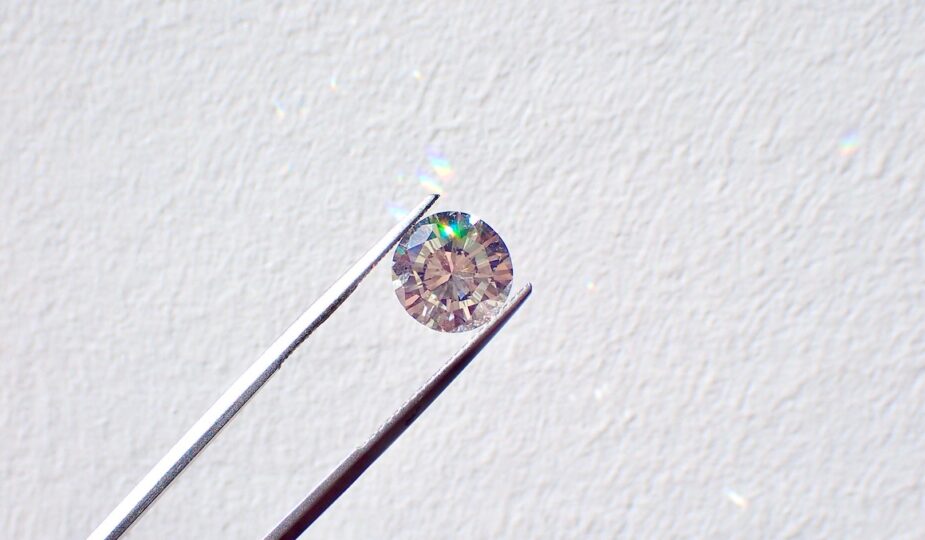Lab-grown diamonds, also known as cultured or synthetic diamonds, have emerged as a compelling and ethical alternative to traditionally mined diamonds.
This article will explore the merits and drawbacks of lab-grown diamonds. Beyond their striking beauty, these diamonds carry ethical, environmental, and financial implications. In this brief guide, we delve into the key factors to contemplate when venturing into the world of lab-grown diamonds.
Pros of Lab-Grown Diamonds
Ethical Sourcing
In the ever-evolving world of fashion, ethical sourcing has emerged as a pivotal concern.
Lab-grown Diamonds have a conflict-free origin. They eliminate ethical dilemmas such as blood diamonds. These are associated with potential human rights abuses and environmental damage in diamond mining regions.
It does not support harmful practices like child labor or unsafe working conditions prevalent in certain mining operations.
Environmental Benefits
Lab-grown diamonds present substantial environmental benefits, positioning them as a responsible choice for eco-conscious consumers.
Traditional diamond mining often involves invasive excavation and substantial land disruption, leading to deforestation, soil erosion, and habitat destruction.
On the contrary, the process of making synthetic diamonds minimizes the need for large-scale mining operations. This results in a drastic reduction in land usage and avoids the release of harmful pollutants.
Price
Cultured diamonds often come at a lower cost compared to their mined counterparts. The availability of lab-grown diamonds is steadily increasing, further contributing to their affordability. This makes them more accessible to a wider range of consumers.
Customization
The easy customization of lab-grown diamonds is appealing to individuals seeking unique, personalized jewelry. These diamonds can be precisely engineered, allowing for a wide range of customization in terms of shape, size, and color.
Cons of Lab-Grown Diamonds
Lack of Rarity
Lab-grown diamonds can be produced on demand and in larger quantities. This diminishes the sense of exclusivity and scarcity often associated with natural diamonds. The allure of owning a rare and unique gem is a key factor for many individuals when purchasing traditional mined diamonds.
Energy Consumption
The process of creating synthetic diamonds in a controlled lab environment necessitates substantial amounts of energy. High temperatures and pressure are utilized to replicate the natural conditions under which diamonds are formed.
This energy-intensive production process, though advancing in efficiency, still requires significant electricity and resources. Critics argue that the energy footprint associated with lab-grown diamonds can be comparatively higher than that of mined diamonds when considering the entire lifecycle, from manufacturing to market delivery.
Limited Size
The technology used to produce these diamonds in a controlled setting currently has size limitations. This limitation is a result of the challenges in maintaining the necessary conditions for diamond growth on a larger scale within a laboratory environment.
Natural diamonds, on the other hand, offer a more diverse range of sizes, including rare and substantial diamonds that are highly prized in the traditional market.
Perceived Value
Despite their technical composition being nearly identical to natural diamonds, lab-grown diamonds are often viewed as less valuable in the eyes of traditional consumers.
The historical and emotional significance attached to natural diamonds, associated with rarity, tradition, engagement rings, and the romanticism of a natural geological process, can't be easily replicated by diamonds grown in a lab.
This perception affects the resale value and market acceptance of lab-grown diamonds, deterring some buyers who prioritize the traditional status and symbolism associated with naturally occurring diamonds.
Quality and aesthetics
Ensuring consistent quality and purity can be challenging to achieve with natural diamonds. This tight control over variables such as temperature, pressure, and chemical composition results in diamonds with predictable characteristics and fewer inclusions.
This reliability in quality appeals to consumers looking for a pristine, flawless gem, highlighting the advantages of lab-grown diamonds in terms of quality assurance and product uniformity.
Aesthetic Appeal
Lab-grown diamonds closely emulate the appearance and brilliance of natural diamonds. To the untrained eye, lab-grown diamonds are virtually indistinguishable from their mined counterparts.
Their crystal structure and refractive index are so similar that even experts often require specialized equipment to differentiate between them.
Certification
Reputable gemological laboratories, such as the Gemological Institute of America (GIA) and the International Gemological Institute (IGI), provide certifications for lab-grown diamonds. They verify their characteristics and attest to their authenticity.
These certifications not only instill confidence in buyers by guaranteeing the gem's quality and origin but also establish a standardized system for assessing lab-grown diamonds.
Consumer Choice
Transparency
Transparent labeling and clear disclosure regarding the origin of diamonds are paramount for empowering consumers to make informed choices.
It allows buyers to navigate the market with confidence, understanding the ethical and environmental implications of their purchase.
Market Acceptance
The market acceptance of lab-grown diamonds has witnessed a notable surge in recent years. As consumers become more knowledgeable about the advantages offered by lab-grown diamonds, their appreciation for these gems grows.
Ethical Preferences
Ethically conscious consumers are drawn to lab-grown diamonds due to their conflict-free origin and reduced environmental impact.
Simultaneously, lab-grown diamonds offer a more budget-friendly option, allowing consumers to invest in larger or higher-quality stones without stretching their financial limits.


